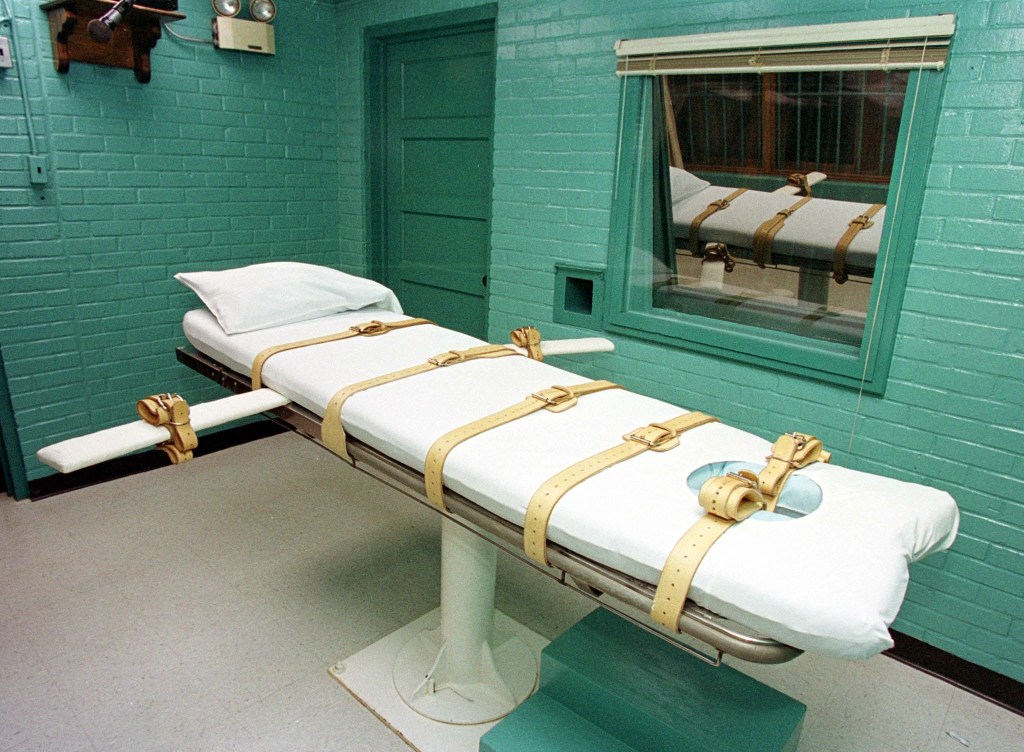Social Update: Lethal Injections
The death penalty is, without a doubt, one of the most controversial topics out there, right up there with religion, politics, and abortion. Admittedly, the debate has been done to death. 31 states in the United States currently still hand out death penalties to convicted prisoners. Out of those states, there are still five approved methods. Among the five, lethal injection is by far the most popular method, beating out electrocution, lethal gas, firing squad, and hanging. For a long time, lethal injection has been viewed as the most humane of the death penalties. However, recently there has been a huge debate about how humane a lethal injection actually is. The drugs themselves that are being used for the procedures are being called into question, as more and more executions are botched, resulting in a prolonged death which most people don't realize from the outside.
Whether you're for or against the death penalty, you might not know a lot about the actual process that occurs in order to administer a lethal injection. In fact, the term lethal injection is actually a misnomer in the sense that a lot of people assume that it is just one drug that is administered. In fact, in most cases, a minimum of three drugs are administered. According to Amnesty International, the three drugs typically used are Sodium Thiopental (to induce unconsciousness), Pancuronium Bromide (to slow breathing and cause muscle paralysis), and finally Potassium Chloride (to stop the heart). If any of these drugs are administered incorrectly or not at all, the results can be disastrous for the victim.
For example, if for whatever reason, the Sodium Thiopental fails to be delivered, everything that follows is felt while fully conscious. The victim will feel struggle to breathe and will suffer a heart attack when the Potassium Chloride is administered. Likewise, if the Pancuronium Bromide isn't administered right, the muscles will not paralyze, meaning there will be intense pain throughout the entire procedure. Lastly, if not enough Potassium Chloride is used, the victim may suffer a heart attack, but not a fatal one. The whole procedure would have to be repeated once again.
There is also the issue of how not everyone's body and tolerance is the same. For example, intravenous drug users may find that their tolerance for drugs is higher than most, requiring more drugs to properly conduct the execution. Those with a higher body weight would also obviously require more drugs to conduct the execution successfully.
There have been many highly publicized cases of botched lethal injection executions. In January of 2014, Michael Woods received a lethal injection. However, something went wrong in the procedure in regards to the paralyzing agent. Once the last drug in the cocktail was administered, Woods woke up and began to scream, "I feel my whole body burning." He would eventually die, but not before it became evident that a lethal injection is not always an act of comparative mercy. Woods definitely suffered before his death.
In April of the same year, Clayton Lockett received a lethal injection. However, during the administration of the drugs, the needle went through Lockett's vein, and into the muscle in his leg. Once the executioners realized what they had done, they closed the curtains and attempted to call off the execution, but it was too late. Lockett later died of a heart attack, fully aware.
Also in 2014, Joseph Wood's execution went on for longer than it was supposed to. In total, the execution lasted about two hours, with witnesses claiming that Woods gasped for air a total of about 660 times before his heart finally gave out. It was later reported that the supposed lethal dose had to be administered fifteen times before Woods died. This last example is actually different than the others, in that the drugs used were different than normal. Instead of the usual combination, Midazolam, a benzodiazepine, and Hydromorphone, a powerful painkiller opiate were used.
These drugs came to be used by some states (Florida, Oklahoma, Arizona, Ohio) after the manufacturer of several drugs used by the United States for executions, decreed that their drugs, which have other beneficial uses, should not be used for lethal injections. However, before their use in executions, these drugs were never labeled to be used for lethal injections, and so they were entirely untested for that purpose. In addition, as stated before, these drugs are even more dangerous to use because they are drugs that have cross tolerances with other intravenous drugs that addicts use. An addict with a Xanax addiction would need a lot more Midazolam to kill him than the average person. Likewise, an addict with a heroin addiction would need a lot more Hydromorphone to stop his heart. If not, these victims run the risk of suffocating to death by respiratory failure before the drugs ever stop their heart. Because of this, there were even more botched executions that took longer than they should have.
So clearly, there are many problems with the use of lethal injections. They are not as simple as they seem and they have a lot of drawbacks. The alternatives, electrocution, firing squad, and lethal gas, are even more cruel and have the potential to go on even longer than a lethal injection. If you think about it, if you're trying to make a method of execution that is painless, something like a hanging would be more appropriate, as gruesome as that sounds.

